

European Nightjar
AGE – BEST CRITERIA:
Most birds are not possible to age further than 2cy+ due to the complete pre-breeding moult. However, quite a few individuals arrest their pre-breeding moult before completion and the retained feathers (often found in alula or SS) can usually be assigned to either juvenile or adult type, and thereby giving the possibility to separate some 2cy and 3cy+ birds.
Note that remiges within the same generation in some birds may appear rather different in colour tones, wear and length (e.g. the inner PP may appear browner and more worn than the outer PP, or single SS may be slightly longer/shorter than adjecent feathers) and this should not be inferred as a moult limit.
2cy+:
2cy:
3cy+:

2cy May (female). Some birds arrested their pre-breeding moult during winter and show two generations of wing feathers. Such birds can often be specified to either 2cy or 3cy+. This individual shows two generations of AL feathers. The inner two are pre-breeding (fresh with a dark brownish-black ground colour and a dark grey tip) while the outermost is much bleached and worn, which normally is the case with juvenile feathers after the first winter. Further, the pale fringe in the tip is visible and the feather shows a typically juvenile loose texture. [4610124]
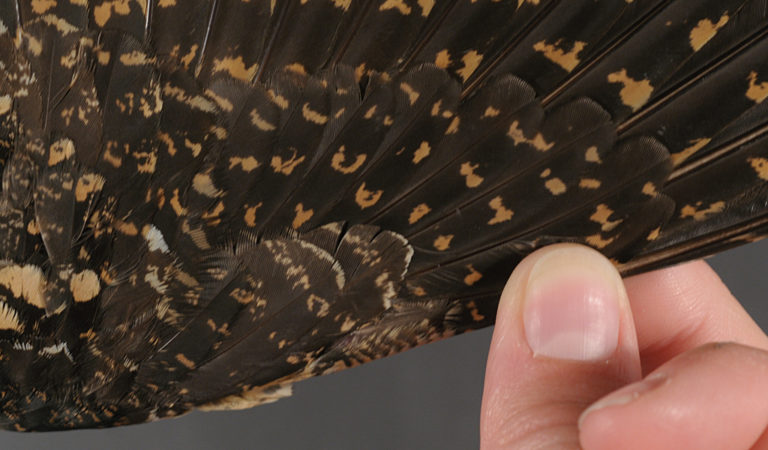
2cy June (male). Another example of a bird that is possible to specify as 2cy. The AL feathers contains two different generations where the two outer feathers are juvenile (bleached, rather frayed, loose texture and the pale fringes are clearly visible). The innermost pre-breeding feather is fresh and dense in texture and show a dark brown-black ground colour. Note that the worn MC and GC still are difficult to discern from the newly moulted feathers. [4586328]
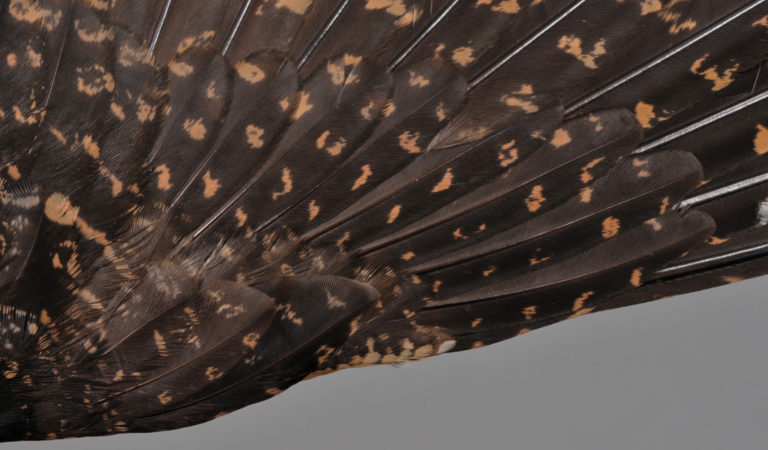
3cy+ May (male). Birds showing an arrested pre-breeding moult, where the retained feathers are of adult type, are possible to age as 3cy+. Note here that the AL contain two generations of feathers where the outermost is fresh with a dark brownish-black ground colour and a dark grey tip. The inner two (more than one year old) are pale medium-brown and show rather frayed tips. They are however similar in pattern and texture to the outermost feather and, more important, lack pale buff fringes. Note also one retained GC being much bleach and worn with rather similar pattern as the adjacent GC. [4611689]
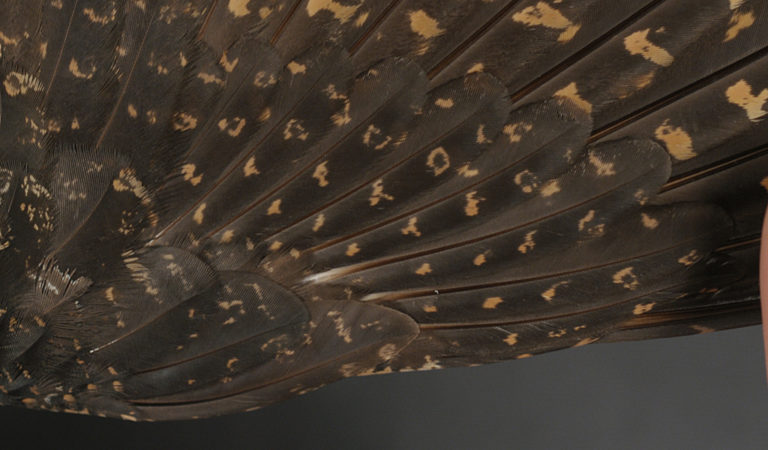
3cy+ May (female). AL feathers of two generations where the outermost (retained) one is of adult type - pale medium-brown in ground colour, lacking pale buff fringe and somewhat worn and bleached at tip. The inner two are fresh with a dark brownish-black ground colour and dark grey tips, but still similar in pattern and texture to the retained outermost feather. Note also one retained LC and at least 2 GC being much bleached and worn. [4586319]
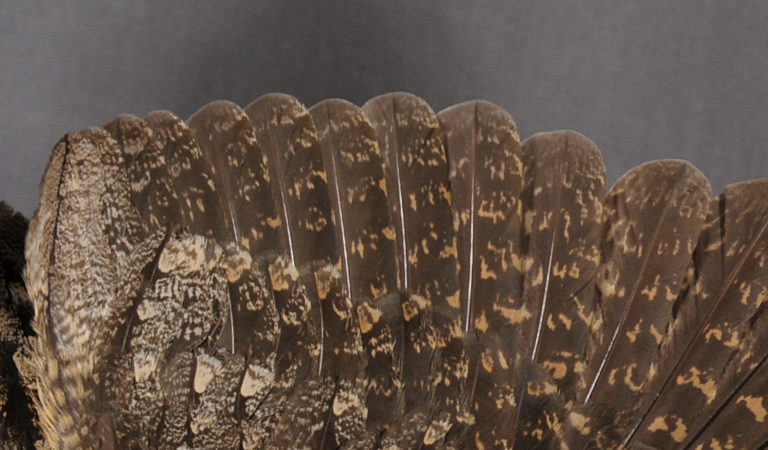
2cy+ May (male). Adult type SS with dark and rather worn tips. Birds that performed a complete pre-breeding moult (showing only one generation of feathers in the wing) are not possible to age further than 2cy+. Note that adult birds regularly show SS (of same generation) that differ somewhat in length and pattern. [4586311]
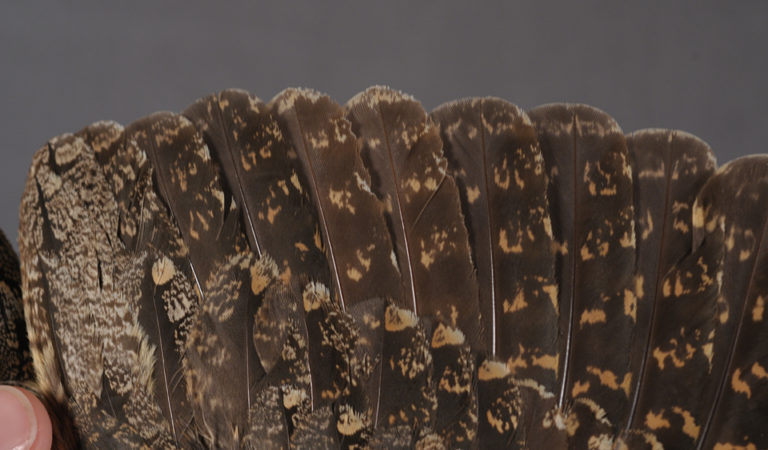
2cy June (male). A bird that arrested the pre-breeding moult, showing retained SS that allows a better specified ageing. Retained SS are of juvenile type, and usually stands out as being bleached and rather worn (even though inner SS are among the more protected feathers of the wing). Tips of juvenile SS are usually pale but may have worn off. Note that the general pattern of the juvenile SS does not necessarily have to differ much from adjacent moulted SS of adult type. [4586328]
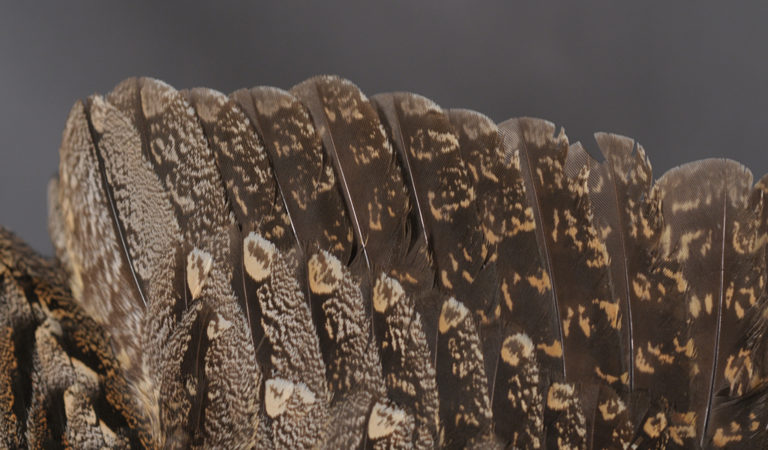
3cy+ May (male). As in 2cy birds, retained feathers (paler and more worn) are found among the central SS. In 3cy+ howerer, these retained SS are of adult type. In this bird, the pattern is not identical with the adjacent feathers, but more important the tip is adult like dark, and not prominently pale as found on juvenile SS. [4586317]
Ringers’ DigiGuide is sponsored by: